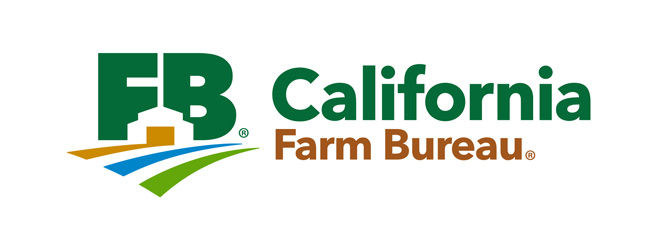
April 7, 2021 - By Christine Souza - With all signs pointing to a critically dry year in California, farmers are trying to add flexibility to help them make it through the season.
Tulare County farmer and dairy operator Tom Barcellos said he expects to receive "almost nothing" this year when it comes to water supply.
"This year, it doesn't look like we're going to get much out of the Tule River; there's just basically no water coming," Barcellos said. "We've got more acres than we've got water, so naturally we're going to have to fallow some and concentrate on what we can irrigate."
Barcellos farms in the Lower Tule River Irrigation District and buys water through a Class 1 contract with the Central Valley Project Friant Division. As such, he would receive a 20% supply. Barcellos grows much of his own dairy feed and said he plans to fallow acreage that would have been planted with corn silage. Instead, he will purchase baled mixes of hay that he would have grown himself if he had more water.
"We have surplus feed and stockpile feed in the good years to make sure we have enough in the bad years," he said, "but as that gets depleted and if you don't have enough silage, then you've got to cut your ration back and find out what you're going to replace it with. I've seen people reduce herd size or sell their heifer program and not have to feed them."
Like other farmers facing limited water supplies, Barcellos said he is concerned about high prices for purchasing supplemental water.
"The real question is: Is there real water available to buy?" he said.
CVP contractors in the western San Joaquin Valley, who had received only a 5% initial allocation, saw the allocation suspended late last month.
Fresno County-based Woolf Farming buys water from the Westlands Water District, which is supplied through the CVP. Daniel Hartwig, the farm's resource manager, said the delayed 5% allocation "means a lot of uncertainty and people don't know how to plan, and it means a lot of growers are having to go out into the market to try and buy water, but there's very little available."
Woolf Farming began planting tomato transplants last week. Hartwig said the farm had to order the plants back in December, to be sure they'd be available.
"Even if we get that 5% (allocation), that's like 2 inches of water per acre, so unfortunately, we're going to have to lean a little bit on our groundwater this year," he said.
Cotton will be the farm's "flex crop," Hartwig said, meaning the farm will adjust cotton plantings based on the amount of water available.
Nick Rocca, whose family farms raisin grapes and almonds in Fresno County, said the Fresno Irrigation District has allocated 40% supplies. The district receives water from Pine Flat Reservoir and the Kings River, and can supplement with purchased water from the CVP Friant division.
"We're not going to get our first water delivery until June or July, which means I'm going to get two to three water deliveries, maybe, and I'm going to have to pump more," Rocca said. "There will be ground in the district that doesn't get farmed this year, and farmers right now are trying to decide which ground that is."
In the Colorado River region in Imperial County, Larry Cox, who farms vegetable and forage crops, described himself as " fortunate."
"In Imperial Valley, we have senior water rights and a high allocation, so we're not looking at any kind of cuts for the upcoming year," Cox said, adding, "The way the Colorado usually flows, you may have a 20 million acre-foot year followed by a 13 million acre-foot year, so having the amount of storage on the river is incredibly valuable."
Farmers throughout water-short areas also face restrictions on groundwater, as local agencies prepare to implement the Sustainable Groundwater Management Act, or SGMA.
Barcellos said his district is located in the Tule Basin, which is critically overdrafted.
"We know, as farmers, that we're in a critical year," he said.
Along with the suspension of certain CVP deliveries, the State Water Project reduced its allocation to 5%, down from an initial 10%, and the State Water Resources Control Board sent early-warning notices to some 40,000 water rights holders, urging them to plan for potential shortages by reducing water use and adopting conservation measures.
Amid the drought hitting California and other Western states, a coalition of more than 200 agricultural and water organizations said it would urge the federal government to further bolster investment in the nation's aging water facilities.
In response to an infrastructure program unveiled by President Joe Biden last week, the coalition—which includes the California Farm Bureau—said it looks forward to working with the administration and Congress on the larger need for Western water infrastructure, such as aboveground and underground water storage and conveyance facilities, along with federal financial mechanisms for such water projects.
"To ensure that food can continue to be safely and affordably produced in the West, and that rural communities continue to have access to the water critical to their economies, it is important that water supply investment be included as a necessary component of a national infrastructure package," California Farm Bureau President Jamie Johansson said. "We will continue to work with congressional leaders to build on the administration proposal with enhanced funding for water infrastructure."
The coalition said it recognized constructive elements of conservation, efficiency, recycling and watershed management included in the administration infrastructure proposal, and said the drought makes it "even more critical to recognize the need for rural water infrastructure investments to capture and store water for use when it is needed most."
(Christine Souza is an assistant editor of Ag Alert. She may be contacted at csouza@cfbf.com.)
Permission for use is granted, however, credit must be made to the California Farm Bureau Federation when reprinting this item.
Reprinted with permission: California Farm Bureau Federation
